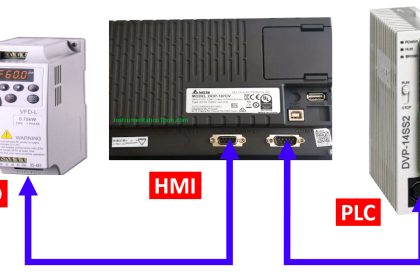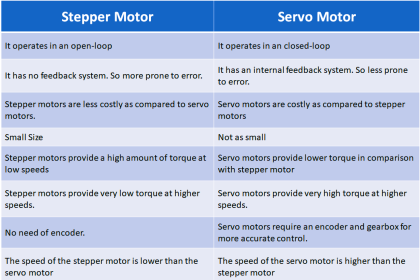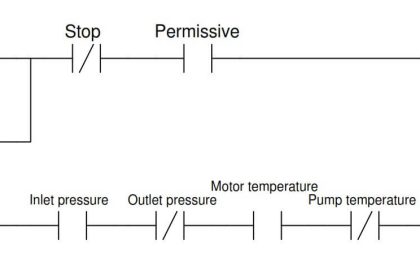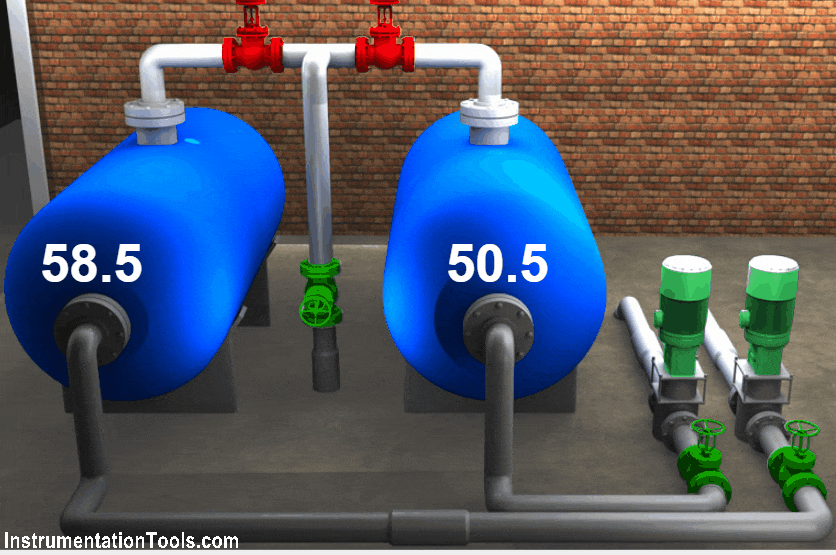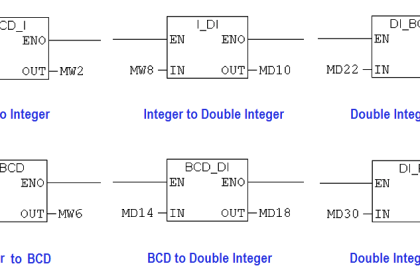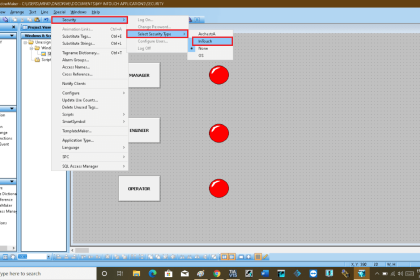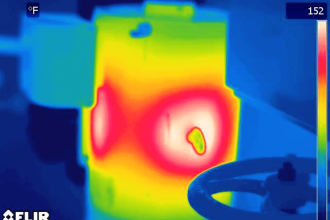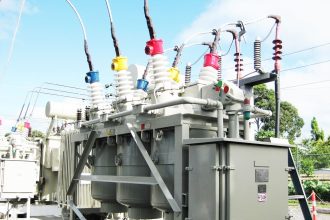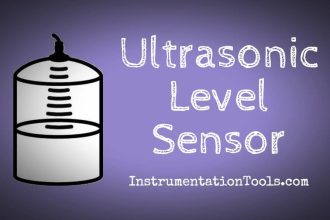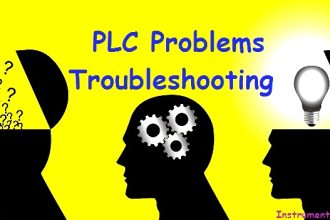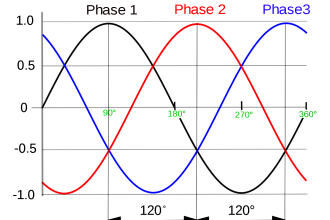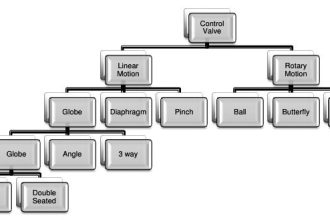Learn the differences between wet contacts and dry contacts in PLC systems for technicians and engineers working with automation controls.
Wet Contacts and Dry Contacts
In this video, you will learn the dry and wet contact questions with explanations.
Question 1
What is a “dry contact” in the PLC systems?
A. A contact that carries no voltage or current.
B. A contact that switches power directly.
C. A contact that operates in a wet environment.
D. A contact that handles high voltages.
Show the Answer
A contact that carries no voltage or current.
Question 2
What is the primary function of a “wet contact” in a PLC system?
A. To switch between different power sources.
B. To isolate circuits from each other.
C. To supply voltage and current to an external circuit.
D. To handle high-frequency signals.
Show the Answer
To supply voltage and current to an external circuit.
Question 3
How do dry contacts typically interact with the circuits they control in a PLC system?
A. By providing a voltage signal to the circuit.
B. By opening or closing the circuit without providing power.
C. By isolating the circuit from electrical noise.
D. By amplifying the signal in the circuit.
Show the Answer
By opening or closing the circuit without providing power.
Question 4
What is a “wet contact” in the PLC systems?
A. A contact that carries a voltage or current.
B. A contact that is always closed.
C. A contact that is used for emergency shutdowns.
D. A contact that operates in a humid environment.
Show the Answer
A contact that carries a voltage or current.
Question 5
How does the wiring of a dry contact differ from that of a wet contact in a PLC system?
A. Wet contacts require separate wiring for power and control.
B. Dry contacts are wired with an external power source.
C. Wet contacts are always wired with protective relays.
D. Dry contacts require fewer wires.
Show the Answer
Wet contacts require separate wiring for power and control.
Question 6
What is a critical consideration when wiring wet contacts in a PLC system?
A. Using wires that can handle high voltage.
B. Ensuring the power and signal wires are correctly separated.
C. Ensuring that the contact is properly insulated.
D. Preventing electrical noise during operation.
Show the Answer
Ensuring the power and signal wires are correctly separated.
Question 7
What is the main difference between wet contacts and dry contacts in a PLC?
A. Dry contacts are for AC, wet contacts are for DC.
B. Dry contacts are always open, wet contacts are always closed.
C. Wet contacts carry voltage, dry contacts do not.
D. Wet contacts use relays, dry contacts do not.
Show the Answer
Wet contacts carry voltage, dry contacts do not.
Question 8
In what application are dry contacts in PLCs most commonly used?
A. In systems where continuous power is needed.
B. In power-heavy circuits where high current is needed.
C. In safety-critical applications where voltage should be isolated.
D. In low-voltage control systems for rapid switching.
Show the Answer
In safety-critical applications where voltage should be isolated.
Question 9
Which of the following is a common characteristic of wet contacts in PLCs?
A. They are often used in high-voltage applications.
B. They typically handle only small control signals.
C. They are used exclusively in relay logic circuits.
D. They do not require external power.
Show the Answer
They typically handle only small control signals.
Question 10
Why might an engineer choose to use a dry contact over a wet contact in a PLC circuit?
A. To reduce the cost of wiring and components.
B. To ensure faster response times in switching.
C. To ensure the contact can handle higher currents.
D. To minimize the risk of electrical interference.
Show the Answer
To minimize the risk of electrical interference.
Question 11
What is a typical disadvantage of using wet contacts in a PLC system?
A. They are limited to low-power applications.
B. They are more prone to mechanical failure.
C. They cannot be used in safety-critical systems.
D. They require additional power to operate.
Show the Answer
They require additional power to operate.
Question 12
Which scenario would most likely require the use of wet contacts in a PLC system?
A. When isolating control circuits from power circuits.
B. When working in hazardous environments with explosive gases.
C. When sending signals to an external monitoring system.
D. When controlling large industrial motors.
Show the Answer
When sending signals to an external monitoring system.
Question 13
What is a common use case for dry contacts in a PLC system?
A. For switching high-current loads directly.
B. For use in circuits requiring continuous current.
C. For controlling circuits without introducing voltage.
D. For providing feedback to high-power devices.
Show the Answer
For controlling circuits without introducing voltage.
Question 14
Why are wet contacts sometimes preferred in certain PLC applications over dry contacts?
A. They are easier to integrate with external sensors.
B. They can provide power to the circuit they control.
C. They can handle higher current loads.
D. They are less expensive to implement.
Show the Answer
They can provide power to the circuit they control.
Question 15
Which of the following is a typical feature of dry contacts in PLC systems?
A. They are always closed when activated.
B. They can only be used in DC circuits.
C. They require an external power source to function.
D. They generate less heat compared to wet contacts.
Show the Answer
They generate less heat compared to wet contacts.
Question 16
In what situation might a dry contact be unsuitable for use in a PLC system?
A. When minimizing heat generation is critical.
B. When using them in hazardous environments.
C. When controlling devices that require a continuous power supply.
D. When the circuit requires electrical isolation.
Show the Answer
When controlling devices that require a continuous power supply.
Question 17
Why are dry contacts considered safer in hazardous environments?
A. They do not generate sparks since they carry no voltage.
B. They can be used to disconnect power rapidly.
C. They are always open, preventing current flow.
D. They are encased in protective insulation.
Show the Answer
They do not generate sparks since they carry no voltage.
Question 18
In a PLC system, what is a primary advantage of using wet contacts over dry contacts for external signaling?
A. They provide faster response times.
B. They can operate without additional relays.
C. They reduce overall system wiring complexity.
D. They can carry higher voltage signals.
Show the Answer
They can operate without additional relays.
Question 19
What kind of devices typically use wet contacts in a PLC system?
A. Small indicator lights or alarm systems.
B. High-power industrial motors.
C. Devices needing galvanic isolation.
D. Devices requiring high-frequency switching.
Show the Answer
Small indicator lights or alarm systems.
Question 20
What is one reason why wet contacts might be used in a PLC system that interfaces with heavy machinery?
A. They require less maintenance over time.
B. They are more resistant to wear and tear.
C. They are better at handling large current loads.
D. They can provide a control signal and power simultaneously.
Show the Answer
They can provide a control signal and power simultaneously.
Question 21
When wiring dry contacts in a PLC system, what is a common mistake to avoid?
A. Running wires parallel to high-voltage lines.
B. Failing to use shielded cables.
C. Using wires that are too thin for the application.
D. Forgetting to connect a common ground.
Show the Answer
Running wires parallel to high-voltage lines.
Question 22
What should be considered when selecting a wire gauge for wet contacts in a PLC system?
A. The power requirements of the total plant load
B. The type of insulation on the wire.
C. The power requirements of the connected device.
D. The length of the wire run.
Show the Answer
The power requirements of the connected device.
Question 23
How do you wire dry contacts to a PLC input module?
A. Use a resistor in series with the contact.
B. Connect to the power supply first.
C. Use a relay between the contact and the input.
D. Connect directly to the input terminals.
Show the Answer
Connect directly to the input terminals.
Question 24
How do you wire multiple dry contacts to a single PLC input?
A. Wire them in parallel.
B. Wire them in series.
C. Connect each contact to separate inputs.
D. Use a multiplexer circuit.
Show the Answer
Wire them in parallel.
Question 25
How do you convert a dry contact to a wet contact for PLC wiring?
A. Connect the dry contact to a voltage source.
B. Use a relay to switch a voltage source.
C. Wire the contact through a diode to the input.
D. Add a resistor in parallel with the contact.
Show the Answer
Use a relay to switch a voltage source.
Question 26
How do you test the wiring of dry contacts to ensure proper connection to a PLC?
A. Use a HART communicator to check for the signal.
B. Test the circuit with a low-voltage source.
C. Use a multimeter to check for continuity.
D. Apply a small current and check for a signal.
Show the Answer
Use a multimeter to check for continuity.
Question 27
What is the impact of incorrect wiring of wet contacts on PLC input readings?
A. The PLC might register intermittent signals.
B. It could damage the PLC input module.
C. It could cause the input to be permanently high or low.
D. The PLC may ignore the input.
Show the Answer
It could cause the input to be permanently high or low.
Question 28
What role do pull-up or pull-down resistors play in wiring dry contacts to a PLC?
A. They prevent false triggering of the input.
B. They increase the current through the contact.
C. They allow the contact to carry higher voltages.
D. They protect the PLC from voltage spikes.
Show the Answer
They prevent false triggering of the input.
Question 29
What is the recommended wiring method for connecting dry contacts in a redundant PLC system?
A. Connect through dual relays to the PLC.
B. Wire them in parallel to both PLC systems.
C. Connect through a single relay to the PLC.
D. Use a multiplexer for each PLC input.
Show the Answer
Wire them in parallel to both PLC systems.
Question 30
What is an advantage of using dry contacts in PLC systems?
A. They require no external power supply.
B. They offer faster response times.
C. They can carry higher currents.
D. They provide complete electrical isolation.
Show the Answer
They provide complete electrical isolation.
Question 31
What is a disadvantage of using wet contacts in PLC systems?
A. They are more expensive to implement.
B. They require additional wiring for power.
C. They are more susceptible to noise.
D. They cannot be used in safety-critical systems.
Show the Answer
They require additional wiring for power.
Question 32
What is an advantage of wet contacts in a PLC application?
A. They are less prone to mechanical failure.
B. They offer higher signal accuracy.
C. They provide power directly to external devices.
D. They reduce wiring complexity.
Show the Answer
They provide power directly to external devices.
Question 33
What is a common disadvantage of using dry contacts in PLC systems?
A. They cannot power external devices.
B. They offer limited signal accuracy.
C. They require constant maintenance.
D. They are prone to voltage spikes.
Show the Answer
They cannot power external devices.
Question 34
What advantage do dry contacts offer in terms of safety?
A. They can handle higher currents safely.
B. They prevent accidental power transfer.
C. They are more robust against wear and tear.
D. They reduce the risk of electrical fires.
Show the Answer
They prevent accidental power transfer.
Question 35
What is a common disadvantage of using dry contacts in systems with high-frequency switching requirements?
A. They can overheat during operation.
B. They are more expensive than wet contacts.
C. They require more maintenance.
D. They cannot handle rapid switching effectively.
Show the Answer
They cannot handle rapid switching effectively.
Question 36
What type of application would benefit from using dry contacts due to their non-powered nature?
A. Safety monitoring in hazardous environments.
B. Continuous power supply monitoring.
C. Electrical signal testing and diagnostics.
D. High-voltage DC motor control.
Show the Answer
Safety monitoring in hazardous environments.
Question 37
What is a typical application for wet contacts in building automation systems?
A. Handling high-speed data processing.
B. Integrating with digital communication protocols.
C. Isolating power supply circuits from control circuits.
D. Triggering alarm systems or emergency notifications.
Show the Answer
Triggering alarm systems or emergency notifications.
Question 38
What is a reliable method to test for proper operation of a wet contact under load in a PLC system?
A. Check the voltage drop across the contact.
B. Monitor the PLC input status while the contact is energized.
C. Measure the resistance across the contact under load.
D. Use an oscilloscope to view the signal waveform.
Show the Answer
Monitor the PLC input status while the contact is energized.
Question 39
How do you test for electrical noise interference in wet contacts wired to a PLC?
A. Check for continuity with a multimeter.
B. Use an oscilloscope to observe the signal waveform.
C. Measure the voltage with an ohmmeter.
D. Monitor the PLC for inconsistent input readings.
Show the Answer
Use an oscilloscope to observe the signal waveform.
Question 40
What is a simple way to test if multiple dry contacts wired to a single PLC input are functioning correctly?
A. Check the input status as each contact is manually activated.
B. Use a current meter to measure the total current flow.
C. Measure the combined resistance of all contacts.
D. Apply a single test voltage to the entire circuit.
Show the Answer
Check the input status as each contact is manually activated.
Question 41
How do you test the response time of dry contacts in a high-speed PLC application?
A. Monitor the input signal with a multimeter.
B. Use a stopwatch to measure the delay.
C. Apply a known signal and monitor the PLC output.
D. Measure the latency with an oscilloscope.
Show the Answer
Measure the latency with an oscilloscope.
Question 42
How do you confirm that a dry contact is not introducing unwanted resistance in a PLC circuit?
A. Measure the contact resistance when closed.
B. Observe the PLC output response time.
C. Check the input frequency with a multimeter.
D. Use a current clamp to monitor the current flow.
Show the Answer
Measure the contact resistance when closed.
Question 43
What testing method is used to ensure wet contacts are handling their rated load correctly?
A. Use a signal generator to simulate varying loads.
B. Measure the voltage drop under load conditions.
C. Conduct a thermal imaging scan during operation.
D. Perform a load test with an oscilloscope.
Show the Answer
Measure the voltage drop under load conditions.
Question 44
How can you test for proper operation of dry contacts in both normally open (NO) and normally closed (NC) configurations in a simple method?
A. Perform a continuity test with a multimeter.
B. Use an oscilloscope to monitor signal transitions.
C. Observe the PLC input status in each configuration.
D. Measure the contact resistance in both states.
Show the Answer
Observe the PLC input status in each configuration.
Question 45
How do you wire multiple PLC outputs to control a single device?
A. Use an OR logic circuit between the outputs and the device.
B. Connect each output through a diode to the device.
C. Wire each output in series with the device.
D. Use an AND logic circuit between the outputs and the device.
Show the Answer
Connect each output through a diode to the device.
Question 46
What is the purpose of using a pull-up resistor in wiring a PLC input?
A. To protect the PLC input from overvoltage.
B. To ensure the input defaults to a high state when not activated.
C. To reduce the noise on the input line.
D. To increase the input signal voltage.
Show the Answer
To ensure the input defaults to a high state when not activated.
Question 47
How do you correctly wire a PLC output to drive an LED indicator?
A. Connect the PLC output directly to the LED.
B. Wire the LED in parallel with the output.
C. Use a current-limiting resistor in series with the LED.
D. Connect the LED to the output through a relay.
Show the Answer
Use a current-limiting resistor in series with the LED.
Question 48
How do you test if a PLC output is correctly wired to an external device?
A. Measure the voltage at the device terminals.
B. Check the device’s response to PLC commands.
C. Monitor the PLC’s output indicator LEDs.
D. Use a continuity tester on the output circuit.
Show the Answer
Check the device’s response to PLC commands.
Question 49
What is the purpose of using a diode when wiring PLC outputs in parallel?
A. To protect the outputs from voltage spikes.
B. To increase the voltage applied to the load.
C. To prevent backfeeding between outputs.
D. To reduce the current load on each output.
Show the Answer
To prevent backfeeding between outputs.
Question 50
What is a critical consideration when wiring a PLC output to a motor starter?
A. Using a relay to interface between the PLC and the motor starter.
B. Connecting the output directly to the motor windings.
C. Ensuring the PLC can handle the motor’s starting current.
D. Wiring the motor starter in parallel with the PLC output.
Show the Answer
Using a relay to interface between the PLC and the motor starter.
Read Next:
- Automation System MCQ Questions
- Interactive Control Valve Parts Quiz
- Control Loops Questions and Answers
- Open Loop and Closed Loop System
- Instrumentation and Process Teams Design

